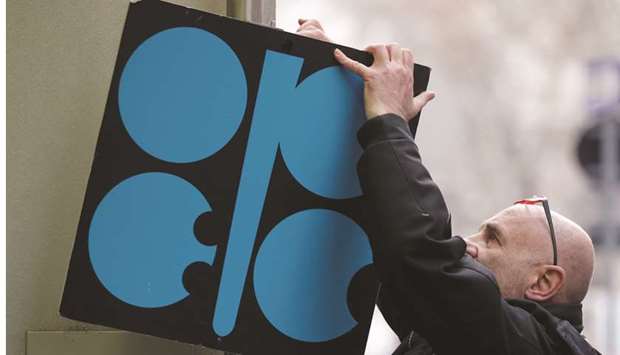With their next meeting just weeks away, Opec and its partners are showing no impetus or stronger action to support oil prices. But without intervention, some influential forecasters say a new supply glut could send the market crashing early next year.
Crude prices, trading at about $62 a barrel in London, may tumble almost 30% to $45 a barrel if the Organization of Petroleum Exporting Countries and its allies don’t announce deeper production cutbacks, according to Morgan Stanley. Citigroup Inc and BNP Paribas SA predict a slide to the low $50s.
That would intensify the strain on group members like Venezuela, Iran and Iraq, which are already reeling from economic crises and political unrest. It would also ripple through the rest of the industry, hitting the shale boom that has transformed the US into the world’s biggest oil producer.
“The prospect of oversupply looms over the market in 2020,” said Martijn Rats, global oil strategist at Morgan Stanley. “Either Opec deepens its cuts, or prices will fall to about $45 a barrel, and force a slowdown in US shale that balances the market.”
Oil supplies from outside Opec are set to expand twice as fast as global demand next year, as a fragile economy crimps consumption while new supplies flood in from the US, Norway and Brazil, the group’s data show. If top Opec producers and Russia, and others who reined in production this year don’t deepen the cutbacks when they meet in Vienna on December 5 to 6, prices will almost certainly weaken, the banks say.
While Opec secretary-general Mohammad Barkindo said the group and its partners are prepared to do “whatever it takes” to prevent another rout, delegates say that the biggest producers in the coalition aren’t pushing for further reductions. Oman’s Oil Minister Mohammed al-Rumhy said on Tuesday the group will likely stick with current output levels.
The Saudis appear to have little appetite for further sacrifices. Russia faces less budgetary pressure than its Opec counterparts and thus less urgency to act. Maintaining the current level of cuts could be the right call if recent optimism about 2020 proves correct. Barkindo signalled last week that the pressure on the organisation to intervene has abated, as the outlook next year is “brighter” because of surprisingly robust economic growth and a thawing of the US-China trade war.
A number of banks that forecast oil prices, including Goldman Sachs Group Inc, Standard Chartered Plc, DNB ASA and SEB AB, say that Opec+ doesn’t need to cut any further, as crude will hold near $60 or above next year as breakneck growth in US shale output tails off.
Yet other forecasts show that there will be too much crude in world markets, at least in the first half of next year. The International Energy Agency – which advises consuming nations – estimates Opec is currently pumping about 1.5mn barrels a day more than will be needed, and so risks a “daunting” surplus.
“The first half of next year will be extremely oversupplied,” said Bob McNally, president of Rapidan Energy Group and a former oil official at the White House under President George W Bush. “To prevent swelling inventories and contain bearish price pressure in the first half, Opec will have to cut again.”
That view was echoed by Total SA chief executive officer Patrick Pouyanne, who said the producer group may be forced to act if prices slide further.
“My feeling is that Opec will react as the price moves below $60 a barrel,” Pouyanne said on Monday.
The downturn that may ensue if Opec doesn’t redouble its efforts could be acutely painful for many of the cartel’s members.

A man fixes a sign with the Opec logo next to its headquarter’s entrance before a meeting of Opec oil ministers in Vienna, Austria (file). Crude prices, trading at about $62 a barrel in London, may tumble almost 30% to $45 a barrel if Opec and its allies don’t announce deeper production cutbacks, according to Morgan Stanley.


